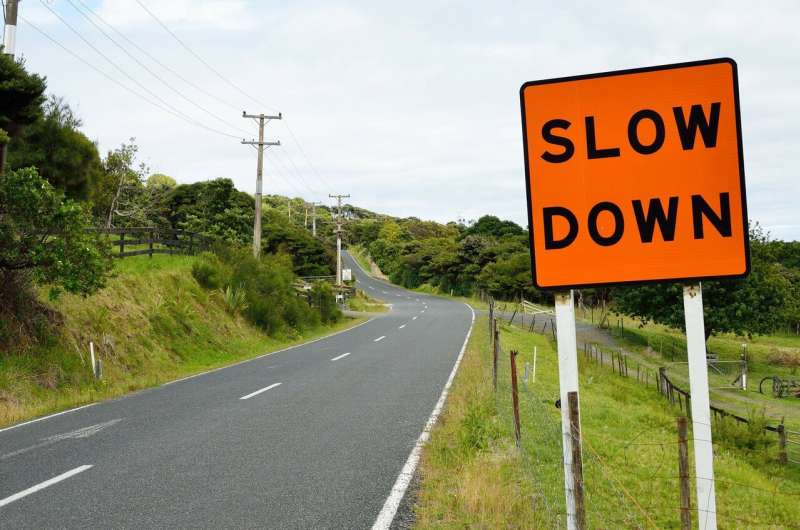Researchers show 20 mph zones effective in reducing road casualties

A review of published evidence by Queen's University Belfast has found 20mph zones to be effective in reducing the number and severity of traffic collisions and casualties.
The research, published in the Journal of Transport and Health provides important evidence to support the implementation of 20mph speed zones across the UK and Europe.
The research, funded by the National Institute for Health Research (NIHR), is part of the largest and most comprehensive study to date into the effects of 20mph speed limits and speed zones to be undertaken in the UK.
Speed limits typically involve legislation and road signage whereas speed 'zones' also involve the use of physical traffic calming measures such as road narrowing and speed humps.
Road traffic injuries are a leading cause of preventable death globally. According to the WHO, the tenth leading cause of death worldwide is a result of road injury.
Dr. Ruth Hunter, Reader from the Centre for Public Health at Queen's University Belfast explains: "The primary reason for the introduction of interventions to reduce traffic speed is to lessen the likelihood of a collision occurring, and to reduce the severity of road traffic casualties.
"Our findings show a growing body of evidence to support the use of 20mph zones, showing them to be effective in reducing the number and severity of collisions and casualties. Our research also found an increase in participants walking and children cycling spontaneously in 20mph zones, indicating the potential indirect positive impact on physical activity."
Dr. Hunter added: "While our research has shown a number of benefits of 20mph speed zones, it has also highlighted a lack of current evidence relating to the impact on public health, air pollution, and noise pollution. Further evidence is also required around the effectiveness of signage-based speed limits. We need to continue to gather and build on this evidence so that we can adequately inform future road safety policies that could help to address the global epidemic around road injuries."
Professor Jennifer Mindell, Editor-in-chief of the Journal of Transport and Health and Professor of Public Health at University College London London, said: "We aim to publish research in the journal showing the positive and negative effects of transport and travel choices on health and inequalities but also to promote research that is important for policy-makers and practitioners. It is very important that policy-relevant research is available to decision-makers, helping them identify worthwhile interventions to implement—and for researchers to then examine the impacts of those interventions."
Dr. Andy Cope, Director of Insight at Sustrans, the walking and cycling charity welcomed the research: "Lowering vehicle speed in built up residential areas to 20mph not only improves safety for our most vulnerable road users, but it can also help to reduce the dominance of motor vehicles making our streets and places more attractive for people to walk, cycle and enjoy. This is why we strongly support a UK-wide 20 mph default speed zones in built-up areas."
More information: Claire L. Cleland et al. Effects of 20 mph interventions on a range of public health outcomes: A meta-narrative evidence synthesis, Journal of Transport & Health (2019). DOI: 10.1016/j.jth.2019.100633
















